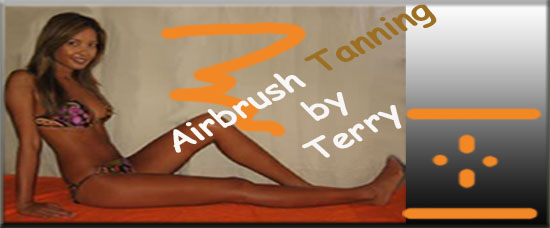Even the telltale odor from DHA is disappearing. Says Loren Groom, a trainer for Pura Sunless, known for its automated faux-tanning booth and compatible product line, “DHA odor encapsulation ‘traps’ odor-causing molecules commonly associated with DHA products and eliminates sunless tanning odor by 75 percent.” Formulas also contain more antioxidants, botanicals, humectants, and other ingredients common to professional skincare to make the experience more of a treatment than a spray tan in the traditional sense. What do these advancements mean for estheticians and your spa? “It means faster, more desirable results for customers, leading to a higher satisfaction and improved reputation for estheticians,” says Romano.
Getting Started
With an initial investment in products and equipment, a spa can quickly see the business-boosting effect of specialized sunless tanning services. “Airbrush tanning is a great service to add to your menu,” says Lindsay Turmelle, president and owner of Tan In The Raw. “Solution and equipment can be expensive, but so are custom airbrush spray tans. Most self-tanning startup kits pay for themselves by the time you finish your initial bottle.”
Clients accustomed to the deep shades gained from hours on the beach or spent in UV beds are switching to healthier alternatives. “Clients want to have that “island vacation” tan without the vacation, as it projects beauty, health, and vitality,” says Nadia Fathallah, category manager at American International Industries, which manufactures and distributes sunless tanning products. “The esthetician’s challenge is to provide the right tan shade the client is aiming for.”
Training Camp
Training, though not regulated or required in the industry, is a standard offering from manufacturers. “Proper education on how sunless products work and in-depth training on application processes enables an esthetician to provide a full range of skincare services to their clientele,” says Rick Norvell, president of Norvell Skin Solutions. “With a minimal investment, adding sunless tanning options to the menu of services has never been easier.” Education varies from quick video demonstrations to full-on classes with models and formula overviews. “Our company provides complete training for spas that are bringing in our sunless tanning treatments,” says Kelly Richardson, president of Be Bronze. “We spend a few hours going over the ingredients with the staff and explain to them specifically how they work and how to use and sell the retail products. The majority of the class is spent in hands-on mode, spray tanning live models.”
Practice makes perfect, so ongoing learning helps the spa take advantage of all the potential profit in sunless tanning. Richardson says, “We also meet with spa management to help set prices, promotions, and answer any questions from a management standpoint.” Companies are utilizing social media to reach staff with continuing education, as well. “Our Norvell University Facebook page is a place for technicians to connect and discuss professional issues with industry veterans,” says Norvell. “Once a week, we host a specific professional topic chat and post daily product tips and advice for handling various scenarios.”
Spa-goers themselves can improve their tanning experiences and results by staying informed, and your staff can help them do so. The skincare regimen before and after the treatment is key for good results. “Exfoliation is extremely important,” says Norvell. “By providing a fresh palette, sunless solution is able to evenly spread across the skin and absorb uniformly.” As with any spa service, he adds, “The guest’s experience is directly related to the proper training of the technician, along with the overall spa environment.”
Turn even the most loyal sun worshipper into a spa worshipper with your sunless bronzing expertise and reap the rewards of glowing reviews.

